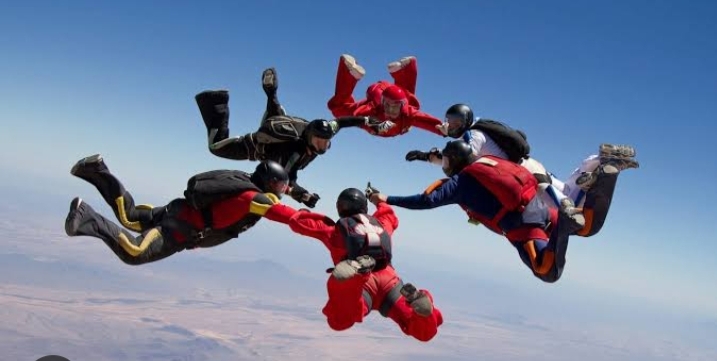
The Ultimate Thrill with Skydiving – a Leap into the Unknown
Skydiving, often described as the ultimate adrenaline rush, is a thrilling adventure that has captivated the hearts of adventure seekers worldwide. It involves jumping from an aircraft at high altitudes and freefalling before deploying a parachute to land on solid ground safely.
-
A Brief History of Skydiving
Skydiving, as we know it today has come a long way since its inception. It traces its roots to ancient times when adventurous souls attempted to jump from cliffs with various makeshift devices. The modern era of skydiving began in the late 18th century with the invention of the parachute by André-Jacques Garnerin, a Frenchman who made the first successful parachute jump in 1797. Over the years, technological advancements and safety measures have transformed skydiving into a popular recreational activity and sport.
-
The Science of Skydiving
Skydiving is not just about taking a leap of faith; it involves a deep understanding of physics, aerodynamics, and engineering. When a skydiver jumps from an aircraft, it enters a state of free fall due to gravity. As they fall, their speed increases, reaching terminal velocity, which is the point at which the force of air resistance equals the force of gravity. This is usually around 120 mph (193 km/h) for a typical skydiver in a belly-to-earth position.
According to PNW Skydiving in Oregon, the parachute is a vital component of skydiving. It creates air resistance, which counteracts gravity and allows the skydiver to slow down their descent. When the parachute is deployed, it undergoes “canopy formation,” which inflates and slows the decline to a safe landing speed.
-
Types of Skydiving
There are several types of skydiving, catering to a wide range of preferences and skill levels:
- Tandem Skydiving: Ideal for beginners, tandem skydiving involves jumping with a certified instructor who controls the parachute, allowing you to enjoy the experience without requiring extensive training.
- Solo Skydiving: For those seeking more independence, solo skydiving, also known as static line or Accelerated Free fall (AFF), requires comprehensive training and certification. Jumpers deploy their parachutes and are responsible for their safety.
- Formation Skydiving involves a group of skydivers forming different shapes or patterns during free fall. It requires precise
- teamwork and coordination.
- Wingsuit Flying: Wingsuit skydiving allows jumpers to glide through the air like a bird by wearing specialized suits with wing-like extensions. It requires advanced training due to the complexity and risks involved.
-
Safety First
Safety is paramount in skydiving. Before taking the plunge, participants undergo thorough training to learn about equipment, safety procedures, and emergency protocols. Regular equipment maintenance and inspections are also crucial to ensure a safe jump.
Skydiving is more than just an adrenaline rush; it’s an adventure that challenges your limits, offers breathtaking views, and fosters a sense of accomplishment. Whether you’re a seasoned skydiver or a first-timer, the experience of soaring through the sky and defying gravity is nothing short of exhilarating. However, always remember that safety should be your top priority. So, if you’re ready to leap into the unknown, do it with the knowledge and preparation necessary to make your skydiving adventure both thrilling and safe.



